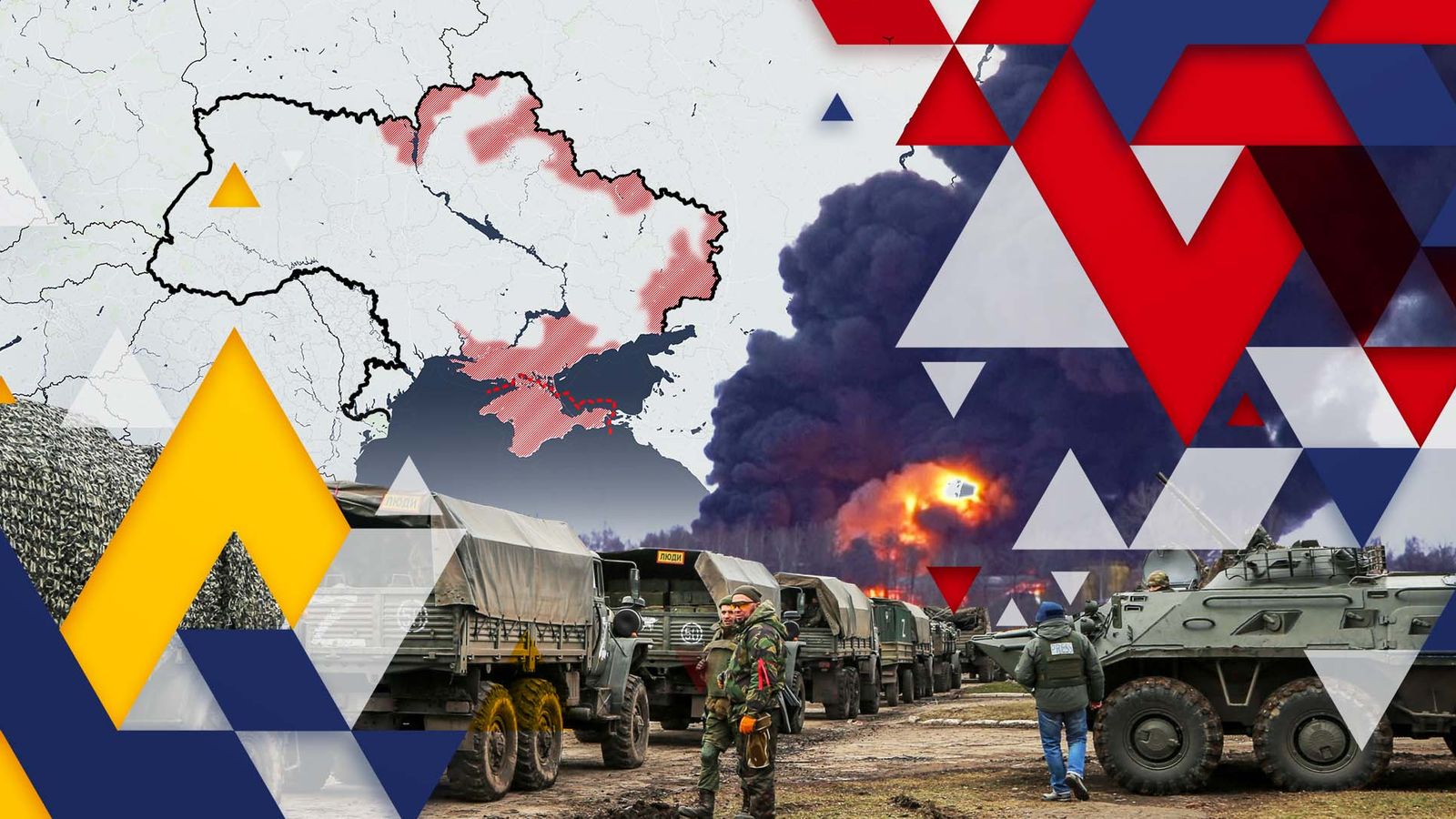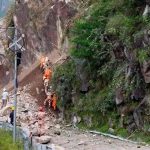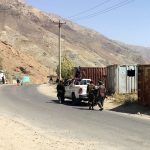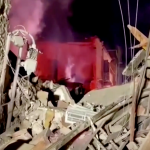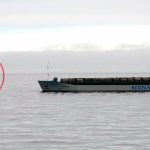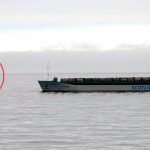Kyiv is turning into a “fortress” as concern mounts that a Russian push to occupy the city may happen in the coming days.
Here are the other key updates from the war in Ukraine:
This map shows the current situation in Ukraine.
The battle for Kyiv
The British Ministry of Defence believes Russian troops are beginning to re-posture ahead of a likely attack on Kyiv in the coming days.
Sky News’ special correspondent Alex Crawford is in Kyiv where the people of the capital are preparing themselves for this.
The city – in the words of the mayor – is turning into a “fortress”.
Crawford said: “In the city centre itself, they’ve dragged buses across what used to be main roads across the capital as well as bombed and broken-down vehicles to try to stop any advance by Russian troops into the capital.”
General Sir Richard Barrons told Sky News about Russia’s recent movements and how an attack on Kyiv would likely unfold.
He said over the last ten days Russian forces have been advancing on Kyiv from the northwest and northeast. Now they are beginning to encircle more of the city and have begun to deploy into battle positions.
This includes the partial dispersal of the 40-mile stretch of military vehicles that has been stalled outside of the capital for more than a week.
Satellite images show what appear to be rocket launchers that have moved to a new position in Berestyanka.
He said: “As the Russians close up on a number of routes towards the city, their forces will be led by tanks and their armoured forces, supported by artillery.
“They are going to meet stiff resistance from the Ukrainian military. However, as they reach the outskirts of this built-up area they’ll transition so that their forces are likely to be led by infantry supported by an awful lot of artillery and air power.”
He added that he believes the Russians will have to destroy large chunks of the city to advance.
If Russia is stalled, General Sir Barrons believes it is at this point “they may resort to chemical weapons to try to unstick it with all the appalling consequences that would bring”.
The east
Shelling intensified in the southeastern port city of Mariupol.
The deputy mayor of Mariupol told Sky News eight different aeroplanes bombed the city and “flattened” it overnight.
Please use Chrome browser for a more accessible video player
More evacuations are expected today and Ukraine’s interior ministry adviser Vadym Denysenko said an attempt was being made today to get eight trucks carrying humanitarian aid into the city.
Previous attempts to move aid in and move people out have failed.
Here is a map outlining some of the areas in Mariupol that have been hit.
The locations range across the city and include residential areas.
Heavy shelling also continued in the northeastern city of Kharkiv, close to the Ukraine-Russia border. It is effectively encircled by Russian forces.
The mayor Ihor Terekhov said that around 48 schools had been destroyed in shelling since the start of the invasion, adding that residential areas had been shelled 89 times in one day.
Ukraine also accused Russian forces this morning of hitting a psychiatric hospital near the eastern Ukrainian town of Izyum.
It is one of a number of hospitals bombed this week, with children’s hospitals in Mariupol and Zhytomyr hit. A second hospital in Zhytomyr was also struck.
Elsewhere in the east, Dnipro was hit for the first time. Three Russian air strikes hit the major industrial hub which is Ukraine’s fourth-largest city and in a strategic position on the Dnieper River.
The strikes killed at least one person, according to interior ministry adviser Anton Herashchenko.
A video verified by Sky News has captured the moment a missile struck the eastern city of Dnipro in Ukraine today.
Момент ракетного удара по Днепру. pic.twitter.com/rxhbamj1JY
The south
Since the start of the offensive, Russia has made significant gains in the south.
On Friday, they continued their offensive around Mykolaiv and mounted further pressure on the port city of Odesa.
The mayor of Odesa said Russian forces could soon surround the city and work to cut off the area from the rest of Ukraine.
Air sirens could be heard in the city today.
As we filmed with volunteers, air raid sirens prompted a brief trip down into the bunker in #Odessa pic.twitter.com/wuLhulqASK
So far rough weather on the Azov and Black Sea has stalled Russian ships’ efforts to come ashore, according to Ukrainian officials.
The humanitarian situation
In the last 24 hours, Russia said humanitarian corridors will open every day at 10am Moscow time (7am GMT) to allow for the evacuation of civilians from certain parts of Ukraine. This is despite the failure of several agreed ceasefires.
Ukraine says 80,000 people were evacuated from the Sumy and Kyiv regions in the last 48 hours. The country’s interior minister claims 400,000 have fled conflict zones in total.
The UN migration agency has reported that more than 2.5 million people have fled Ukraine since the start of the invasion 16 days ago.
Around 1.5 million of those have gone to Poland.
What’s happened so far?
– Day 1: Russia launches full-scale invasion
– Day 2: Russian forces reach Kyiv
– Day 3: Ukraine fights back in Kyiv, Russia gain in the south
– Day 4: Kyiv holds strong, heavy fighting in Kharkiv
– Day 5: Convoy grows around Kyiv as refugees flee
– Day 6: Cluster bombs hit Kharkiv
– Day 7: Civilian casualties mount
– Day 8: Mariupol is isolated as Russian forces create land bridge
– Day 9: Russian forces target Europe’s largest nuclear power plant
– Day 10: Ceasefire violated in Mariupol as bombing continues
– Day 11: Russia prepares Kyiv for advance and how energy could be a key battle
– Day 12: More humanitarian routes opened as bombing continues in Kyiv suburbs
– Day 13: Civilians successfully evacuated – but has Russian advance stalled?
– Day 14: Children’s hospital bombed, civilian evacuations continue and acts of defiance
– Day 15: Shelling of besieged cities continues as Russian armoured column ambushed
Sky News is using daily assessments published by the Institute for the Study of War and AEI’s Critical Threats Project to indicate which parts of Ukraine are under control by Russian troops.
From 2 March, these daily assessments distinguished between areas of Ukraine controlled by Russia and areas of assessed Russian advances (where Russian troops are believed to be operating but not in control).
Other sources for Russian advances include the UK Ministry of Defence.
Sky News is verifying all social media videos and stills before use.
The War in Ukraine is a rapidly developing story. While we endeavour to keep all our data and maps up to date, there might be times when the latest changes have not yet been reflected in the maps.
The Data and Forensics team is a multi-skilled unit dedicated to providing transparent journalism from Sky News. We gather, analyse and visualise data to tell data-driven stories. We combine traditional reporting skills with advanced analysis of satellite images, social media and other open source information. Through multimedia storytelling we aim to better explain the world while also showing how our journalism is done.
